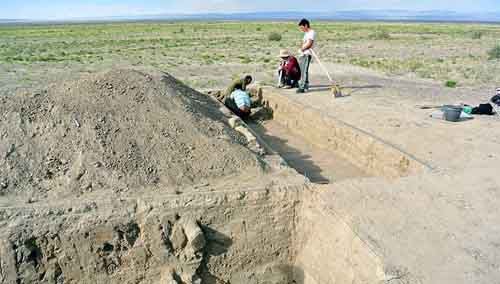Genghis Khan's citadel discovered in Mongolia
Japanese and Mongolian archaeologists have discovered the remains of a 13th-century military outpost established to serve Genghis Khan's conquest of southwestern Mongolia.
 |
| Excavation site in southwestern Mongolia. Photo: Asahi Shimbum. |
The discovery could be useful in understanding the Mongol Empire's westward expansion strategy and trade routes, the team said, according to Asahi Shimbum.
"We hope this discovery will be useful in determining the history of the Mongolian plateau between the 13th and 14th centuries," said Koichi Matsuda, leader of the archaeological team and professor emeritus of the Department of Mongolian Imperial History at Osaka International University.
The team mapped the site about 880 km west of the capital Ulan Bator in 2001 and found that the surrounding geography was similar to landscapes described in a travelogue by a medieval Taoist leader in China.
Archaeologists also unearthed pieces of Chinese ceramics dating from the 13th century. A 2001 aerial photograph shows the remains of a rampart surrounded by an earthen wall.
Last summer, archaeologists carbon-dated the excavated wood and animal bones. Analysis showed the wood dated to the 12th and 13th centuries, while the bones were from the 14th century.
Based on this result, the archaeological team concluded that this place was once a citadel used as a military base when Genghis Khan invaded Central Asian countries.
According to VnExpress


